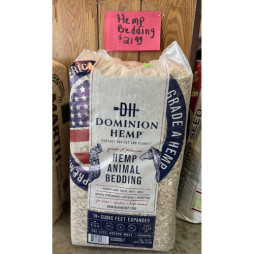{article.name}
Stay Informed
Hot Weather Horse Riding Tips

- Share this:
- Share on Facebook
- Pin on Pinterest
- Tweet on Twitter
Summer can be a great time for riding, with longer days and more time to explore a variety of trails, work on new skills, or prepare for upcoming shows and competitions. Riding in hot weather risks illness and injury, however, so it is important to practice safe riding to keep cool when the temperatures rise.
Risks of Hot Weather Riding
Because of their thick body core, powerful muscles, and overall proportions, horses feel heat much faster than humans. This makes them susceptible to a wide range of health hazards in hot weather, including dehydration, muscle spasms, heat stress, heat stroke, colic, and kidney failure. Furthermore, when an overheated horse starts to have physical difficulty during a ride, the risks of stumbling and falling are much higher, which can lead to devastating leg and knee injuries. By taking note of hot weather and taking proper precautions for a cool ride, you can still enjoy warm weather riding and keep your horse safe and comfortable.
Too Hot to Ride?
Some days may just be too hot to ride at all. As a general rule, add the current temperature (or the expected high temperature that day for a long-duration ride), plus the local humidity. If the total is 140-150 or higher, it is typically too hot for extensive riding. Of course, every horse has different tolerances for heat, and animals in better condition that are acclimated to working in heat may be just fine on warmer days, while older animals that may already have respiratory problems cannot work out in the same elevated temperatures. The overall workout intensity and the duration of the ride, as well as the trail conditions for cooling, such as water, shade, and breezes, all impact whether or not it is too hot to ride. If you have any doubt about whether the day is too warm, it is best to enjoy a cooler, easier workout and save longer, more intensive rides for cooler days.
Tips for Riding in Hot Weather
If you do want to ride in hot weather and your horse is in good physical condition for hotter rides, certain steps can keep both you and your mount more comfortable during the exercise.
- Know your horse’s vital signs and check for dehydration with a skin pinch or gum examination. If your horse is already showing signs of dehydration or irregularities in its breathing, pulse, or other vitals, skip that day’s ride.
- Use lighter, less extensive tack as much as possible, such as shorter blankets or thinner pads so more air circulation reaches the horse’s coat. A wool blanket or pad will naturally wick moisture away from the horse better than artificial fabrics.
- Plan your ride for the cooler parts of the day, such as early morning or late evening. In early morning, both heat and humidity will likely be lower, making the ride safer and more comfortable. Evening rides may still be quite humid even after the day’s heat.
- Choose a thoughtful route for a hot weather ride, taking advantage of shady trails and routes that cross water for immediate cooling. Rides that pass through breezy spaces will also help keep both you and your horse cooler.
- Pace the ride carefully, giving your horse a chance to rest after a strenuous stretch, such as a steep hill or difficult pathway. On very long rides, consider dismounting at times to walk your horse, or take complete breaks when the horse can drink or graze.
- If the footing is safe and the water source is healthy, allow your horse to wade in a creek, stream, or shallow river. This will permit greater evaporative cooling and rinse accumulated sweat salts from your horse’s coat.
- Carry a sponge or absorbent towel and occasionally wet your horse’s abdominal and jugular veins, which can help cool the animal more quickly, especially if there are no wading opportunities along your ride.
- Allow your horse to drink whenever possible during the ride. Not only will this help replenish lost fluid, but the more your horse urinates, the more core heat will be removed from its body as well.
- To protect yourself, wear light-colored, breathable fabrics that will help you stay cool. Wear sunscreen on exposed skin, and remember to keep yourself hydrated even as you provide water to your horse.
Using multiple cooling techniques during a ride can make the experience more pleasant for both you and your horse, so you can both enjoy hot weather rides while minimizing risks.
Cooling Down
After riding on a hot day, remove your horse’s tack as soon as possible, and walk the animal in the shade, preferably with a breeze, to help it cool down slowly and avoid any temperature shock. Offer plenty of fresh, cool water to drink, and hose your horse down or pour water over its flanks and scrape the excess water off. This will remove heat from its skin and coat, helping cool the horse quickly but safely.
Hot weather riding doesn’t have to be dangerous, but you must take proper precautions to keep yourself and your horse safe in extreme heat. By preparing for the ride and staying alert to the heat, you can easily plan a summer ride safely.
Special Offers



Comments